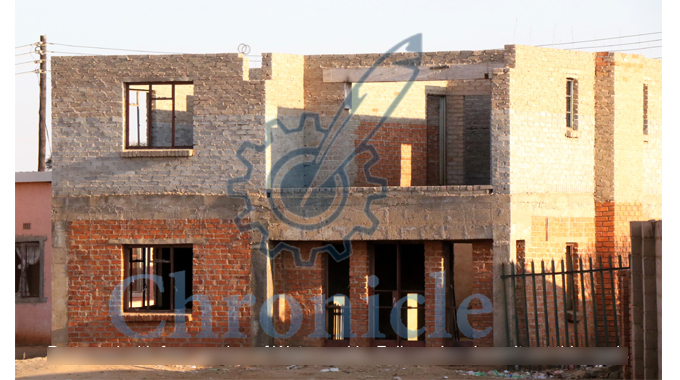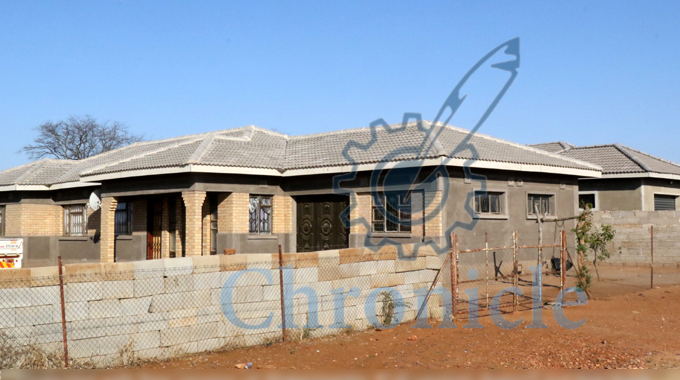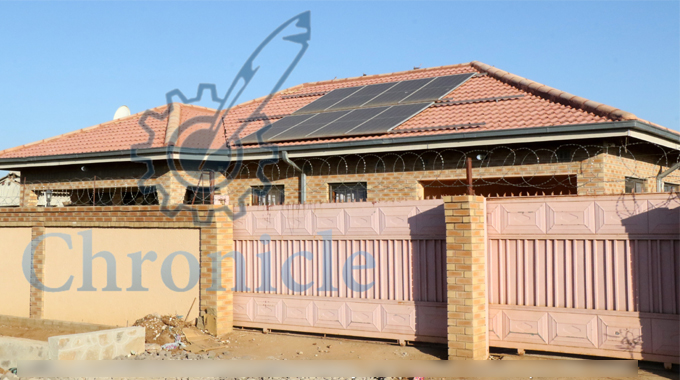Maphisa in modern housing boom

Sikhumbuzo Moyo, Senior Reporter
MAPHISA Growth Point in Matobo District, Matabeleland South, is witnessing a serious housing boom, with modern homes that are coming up looking like those found in leafy suburbs in big cities.
Sprouting gold mines in the district and Zimbabweans based in South Africa and Europe have been in a marathon constructing houses in Maphisa and Mafuyana suburbs.

Houses sprouting at Maphisa Growth Point , Matobo District, Matabeleland South
Some people are building houses with as many as 19 rooms while others have built double-storey houses which have completely changed the face of the rural area.
One 19-roomed house is easily noticeable as one approaches Maphisa centre, just a few metres from Maphisa District Hospital.
The owner is said to be in South Africa.

Houses Maphisa Growth Point , Matobo District, Matabeleland South
Residential land, especially in Mafuyana suburb, costs around R100 000 while construction can gobble almost R500 000, depending on the size of the house. The local authority availed just over 1 000 stands of various sizes for Mafuyana suburb.
The pace of new developments has led council to identify extra land that will offer slightly over 400 low, medium and high-density housing stands.
There will also be a school, a police base as well as a shopping centre.

Houses sprouting at Maphisa Growth Point , Matobo District, Matabeleland South
National power utility company, Zesa Holdings seems to have been overwhelmed by the massive growth of houses as there is no electricity with house owners resorting to the use of solar power which in itself supports use of green energy.
Matobo district development coordinator, Mr Innocent Chaputsira said the housing boom has led to council running out of stands hence the new suburb on the East side of the growth point may soon be commissioned.
“Currently there are no residential stands in Maphisa though there is a new suburb that will soon be commissioned before the stands are rolled out. There will be about 400 or so but at the moment council has no available stands. The new suburb will comprise of low density, medium density and high density stands. There will also be stands for a school, police base and a shopping centre according to the design plan,” he said.

“The boom in house and other infrastructure construction is mainly due to gold mining that is taking place around Maphisa and some of these guys are now investing in infrastructure. Our diasporans are also heeding calls to invest back home which is commendable.”
In its 2022 Population and Census Housing preliminary report on Housing Characteristics and Living Conditions, the Zimbabwe National Statistics Agency (Zimstat) reported that 80 percent of Zimbabweans in rural and urban areas live in modern homes built using bricks, cement and roofed using metal, tiles and asbestos and more crucially, 54 percent of home occupants are landlords.
Rural areas also have the highest proportion of owner occupancy with 76, 8 percent while 78, 7 percent of rural household owners use off grid electricity according to the preliminary report.

Houses sprouting at Maphisa Growth Point , Matobo District, Matabeleland South
In 2021, President Mnangagwa launched the new Zimbabwe National Human Settlements Policy (ZNHSP) which he said was in line with the tenets of international, continental and regional bodies with respect to the provision of modern, affordable, sustainable and climate-proofed shelter.
The President said the inclusive self-sustainable cities and human settlements were also being encouraged in accordance with the national aspirations articulated by Vision 2030 as well as the African Union Agenda 2063 and UN Sustainable Development Goals relating to housing and shelter.

Houses sprouting at Maphisa Growth Point , Matobo District, Matabeleland South
Government has a target to deliver 220 000 housing units by 2025 as prescribed under the National Development Strategy 1 (NDS1) aimed at contributing towards realizing Vision 2030.











Comments